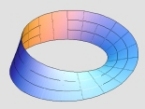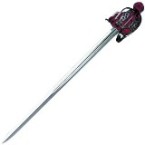GoodGuy
Posts: 1506
Joined: 5/17/2006
From: Cologne, Germany
Status: offline

|
I'd like to pick up a question raised by Perturabo in another thread, where he suspects that rifles from "the 19th century" (I guess he means rifles designed and built from say 1870 - around 1888/90) have longer effective ranges than modern rifles (carbines from 1898-present).
quote:
ORIGINAL: Perturabo
The thing is that it includes practically all the full-powered infantry rifles since Mosin-Nagant. They can fire up to 800+ metres but only with a scope. Effective range without a scope is only 500 metres, while rifles from 10-30 years earlier have an effective range of over 1km without a scope. The only reasonable reason I can think of is that the definition of effective range changed over time.
Not necessarily .... What actually did change, at least in Germany, were the leading German military ordnance officers' ideas of what the typical range of engagement would be in the future. Prior to WWI, they concluded that typical engagements using rifles (then with the Mauser 98 carbine) would occur at distances of 400 meters and above. Parameters like the soldiers' differing skill levels, stress levels, and training/experience levels, quality of the sights .... all important when using a Mauser in medium to long range engagements, were not incorporated here, afaik.
The longer a bullet (say a German 7.9mm x 57mm) travels, the higher the downward trajectory. Bullets fired with a Mauser 98 carbine, for example, will have "dropped" 1 meter after 400 meters. Above that distance, the soldier has to adjust the rifle's sights, to make up for the drop.
Since the Mauser 98's "drop" (after 400 meters) amounted to 1 meter only - delivering a really flat trajectory compared to other rifles of the time, and since the rifle had more than enough "reserves" regarding muzzle velocity (the effective range of the Mauser 98K from 1935 is/was 700 meters without scope, 1000 meters with scope), the ordnance officers in charge changed the rifle's default sight (from a 200 meters minimum) to 400 meters, which I'd consider to be a shift to the "medium range".
This turned out to create a definite disadvantage in WWI, as this, in addition to the Mauser 98 and 98a having a sight that was anything than "eye-friendly" already, forced the soldier to use bad or even impossible holding positions, in order to aim halfway accurately. Also, it turned out that the engagement range was overassessed by the Rifle Test Commission, actual engagements usually occured between 50-300 meters.
The Prussian rifle test commision did not opt for changing the sight to add detailed range finders for ranges below 400 meters, though. As far as I know, after the war (1920s or 1930s), ordnance officers then evaluated that the typical max range of engagement would be ~300 meters (some sources say 300 yards = 274 meters). My guess is that the sights were then corrected before the Mauser 98K was introduced in 1935.
Still, the Mauser (98, 98a, 98k) did even cope with very high pressures (up to 10,000 bar, created by the burning powder of each cartridge), so that it could be used with even more powerful cartridges made for big game hunting (eg. Africa).
There was concern that high levels of ammo consumption could put a serious strain on the armament industry, which (in the 1930s) was not able to deliver sufficient small arms ammunition for a longer (attritional) war, initially. I do know that there was a discussion in the German military to reduce the effective range of the Mauser rifle (eg. by reducing the cartridge's length - to save raw materials and reduce ammo waste), and I've read one or another interesting post about that in the Battlefront forums, but I didn't come across sufficient proof that these ideas were actually carried out, though. If there's someone out there who knows more, pls let me know.
Anyway, that said, I'd say that 20th century rifles do not necessarily have a smaller effective range. I would say that, since the more modern rifles (post 1888) have smaller bullets that weigh less than their predecessors with widths of 10mm or even 11mm, there are some that provide somewhat lower muzzle velocities, which may indeed result in a smaller effective range. With my example, the Mauser 98k's 700 meters without scope, I don't see too much of a difference range-wise, as it's really hard to aim at something at a distance of say 500 to 700 meters without a scope, anyway.
I am sure that the pre-1890s rifles provided lower muzzle velocities (French Chassepot: 410 meters/second), while they were still using somewhat bigger bullets, basically creating an effect/result used by today's long range (sniper) rifles, like the Barret M82, with its 12.7 mm bullet: Besides the bullet having a high(er) ballistic coefficient, which makes it less prone to cross winds, its dimensions alone actually provide for very high kinetic energies that delivers devastating effects on the targets and a relatively flat trajectory. So, the M82's rather low muzzle velocity (~860 m/s) - if compared to modern assault rifles, or even lower calibre high power sniper rifles, packed with the shape and pure weight of the bullet, provides for that accuracy and huge effective range : ~1800 meters.
Downside: The rifleman has to lead a lot and guess a fast target's movements beforehand, as the bullet travels with lower speed. That might have been one of the main reasons for pre-WWI military in Europe to switch to rifles like the Mauser 98, Mosin-Nagant etc., most likelly. Another reason may have been easier and way safer handling of ammunition/cartridges.
What do you think?
< Message edited by GoodGuy -- 12/5/2011 6:55:02 AM >
_____________________________
"Aw Nuts"
General Anthony McAuliffe
December 22nd, 1944
Bastogne
---
"I've always felt that the AA (Alied Assault engine) had the potential to be [....] big."
Tim Stone
8th of August, 2006
|
 Printable Version
Printable Version









 New Messages
New Messages No New Messages
No New Messages Hot Topic w/ New Messages
Hot Topic w/ New Messages Hot Topic w/o New Messages
Hot Topic w/o New Messages Locked w/ New Messages
Locked w/ New Messages Locked w/o New Messages
Locked w/o New Messages Post New Thread
Post New Thread